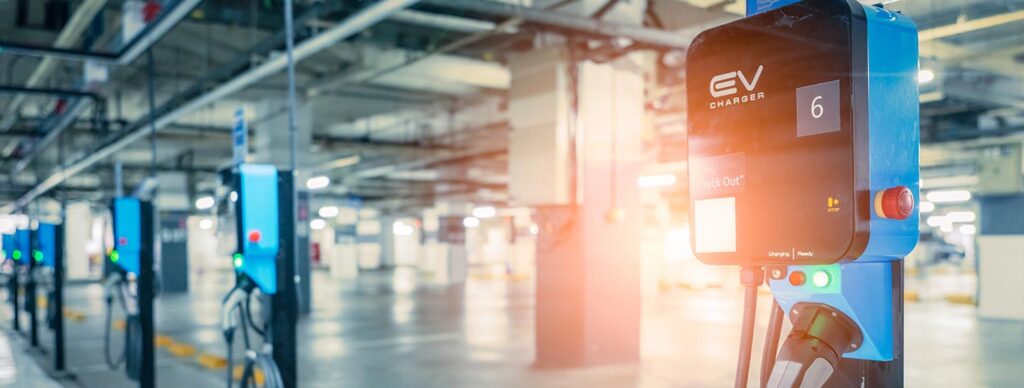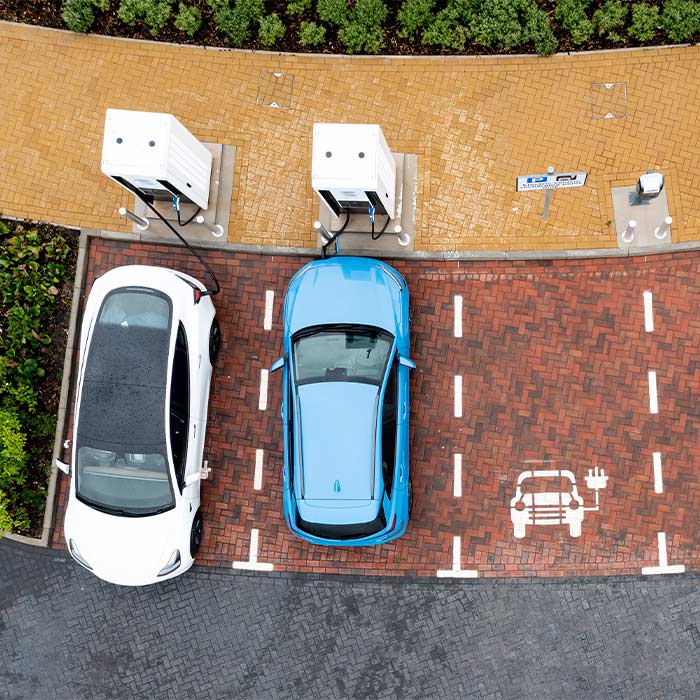Facilitating intelligent and sustainable mobility: IoT solutions for optimising electric vehicle charging stations
Over the last several years, we’ve seen exponential growth in the sales of electric vehicles. During 2020, only 5% per cent of all cars sold were electric. That percentage jumped to 9% in 2021, and in 2022, new electric car sales soared past 10 million, to 14% of the market. China led the way with 60% of electric car sales, while in Europe, one of every five cars sold was an electric vehicle. With the tremendous growth in electric vehicles (EVs), sales have come to soaring demand for fast charging stations.
EVs are not yet equipped with enough energy for long distances, so access to frequent and fast charging is of paramount importance. One of the barriers to even more widespread electric vehicle adoption is range anxiety, the fear of running out of battery power. A robust network of EV charging stations built using the latest Internet of Things (IoT) technology can help alleviate that concern. IoT connectivity and sophisticated sensors allow for creating highly intelligent charging networks that seamlessly connect EVs, vehicle charging stations, charging providers, payment processors and power grid operators.
Real-time Monitoring and Management
With IoT technology, vast networks of EV charging stations can be optimised, managed, and monitored remotely. The IoT devices and sensors facilitate predictive maintenance, real-time data collection, payment and billing integration, and dynamic load balancing. Charging station usage, availability, and performance can be monitored in real-time, providing instant insights into all aspects of the charging environment and infrastructure. IoT technology enables intelligent charging algorithms that can help optimise charging based on grid capacity, overall electric demand, and individual driver preferences.
Drivers looking for an available EV charging pillar can use one of several resources to find the station they need. The Charge My Ride app provides an interactive map of currently available public stations in Malta and Gozo. Recently, Google announced that its AI-enabled Maps application would show EV charging locations and provide very detailed descriptions of each station. Users of the EV pillars can pay through their smartphones or via RFID cards.
Predictive Maintenance
IoT sensors and devices within the EV infrastructure dramatically enhance the functionality and efficiency of EV charging station networks. IoT technology makes remote management and full monitoring of charging stations possible and provides instant insights into the performance of EV charging devices. This real-time monitoring allows early detection of equipment malfunctions and other potential issues.
Charging network operators can implement proactive predictive maintenance programs to keep charging pillars operating at peak performance. With networks often spanning vast geographies, operators can leverage IoT to constantly monitor the status of each individual charging station and the overall communications and data collection environment.

Demand Response and Load Balancing
Although EVs are rightly praised for their eco-friendly design, they do represent a challenge during peak power grid hours or unexpected energy events. Grid regulators, power companies, and EV station operators are using IoT and smart grid integration to accommodate surging electric demand from EVs during peak load times. Consumers may also be incentivised to adjust their electric demand to off-peak hours.
ADR, or Automated Demand Response, is one initiative that is used to ensure that the grid is optimised during peak power demand. Open ADR is a communications protocol that lets grid operators and energy suppliers send control signals to intelligent devices like smart charging devices. This cloud-to-cloud system allows the grid to have full awareness of expected demands. Servers on the utility/load aggregator side can communicate requests for reducing the power load, and end nodes such as smart EV charging devices can respond with information about planned participation in the power reductions, or opt-out data.
Energy Management and Sustainability
Using IoT, vendors and grid operators can implement smart charging algorithms to help optimize EV charging based on grid capacity, individual driver preference and overall electrical demand. The network of smart IoT sensors and algorithms help balance the grid and reduce peak loads. With IoT, communication and monitoring is enabled throughout the overall environment, from EV to charging device to charging network company and grid operator.
One of the key developments in EV power is the integration of renewable energy sources to create sustainable charging. Using power generated via solar, hydroelectric and wind energy brings the hope of long-term sustainability and lower environmental impact to the production of power for our electric vehicles. IoT can assist in managing demand and energy sources during peak times.
Case Studies and Success Stories
Shell Recharge’s IoT-enabled EV charging station network contributes to the environment by saving over 2,000 tonnes of carbon annually. Shell is implementing a worldwide network of fast public chargers which let drivers recharge their vehicles seamlessly. As Europe’s largest charging partner, they offer both fast and ultra-fast charging across the continent.
In Taiwan, Fortune Electric and ASUS IoT joined forces to collaborate on a sophisticated AI-powered EV charging network. It provides efficient and accurate license plate reading and recognition, which helps enable modern smart-city initiatives. By integrating IoT connectivity and EV charging, it’s possible to build a sustainable urban eco-system. Monitoring and analysis of data can be done in real time, and with adaptive load management it’s possible to manage the demands on the grid.
Challenges and Future Trends
Implementing a vast network of EV charging stations can be a challenge. Consumers expect the EV pillars and the network to be up and running when they need them. Instances, when the stations are down or not operating properly, can result in lost revenue and an unacceptable consumer experience. Cybersecurity is also a key issue facing EV station operators, due to both financial payment issues and the danger hacking presents to both network companies and individual smart-car vehicles. EV chargers, when unprotected, can be prime targets for hackers.
In the future, expect advances in IoT technology to facilitate even more connections to renewable energy like wind and solar power. With IoT, it’s possible to manage electricity from multiple sources, enabling the use of green energy when it is available. New initiatives include the incorporation of blockchain validation of carbon credit and tracking of real-time data on emission reduction. The future will also see the advancement of wireless EV charging technology.

Conclusion
With increasing growth in EV vehicle sales, the EV charging infrastructure faces a challenging time. Fortunately, IoT-enabled smart charging stations can help improve charging station reliability, manage peak grid load times, and even enhance the use of renewable energy.
As the world market for electric vehicles grows, further advances in IoT technology will help providers and grid operators respond to increasing consumer demand. With IoT, vendors will be able to accommodate increased consumer demand for EV charging and provide a convenient, reliable, and seamless charging experience.
Get started now with our IoT SIM plans
Our competitive data rates are designed for businesses operating across Europe, the UK, the USA, China and beyond — without any additional roaming fees.
IoT SIM
€5 per GB pay per use in over 60 countries
€1 per SIM per month
Lifetime IoT SIM
1 GB, 100 SMS
10 years for a one-time fee of €10
